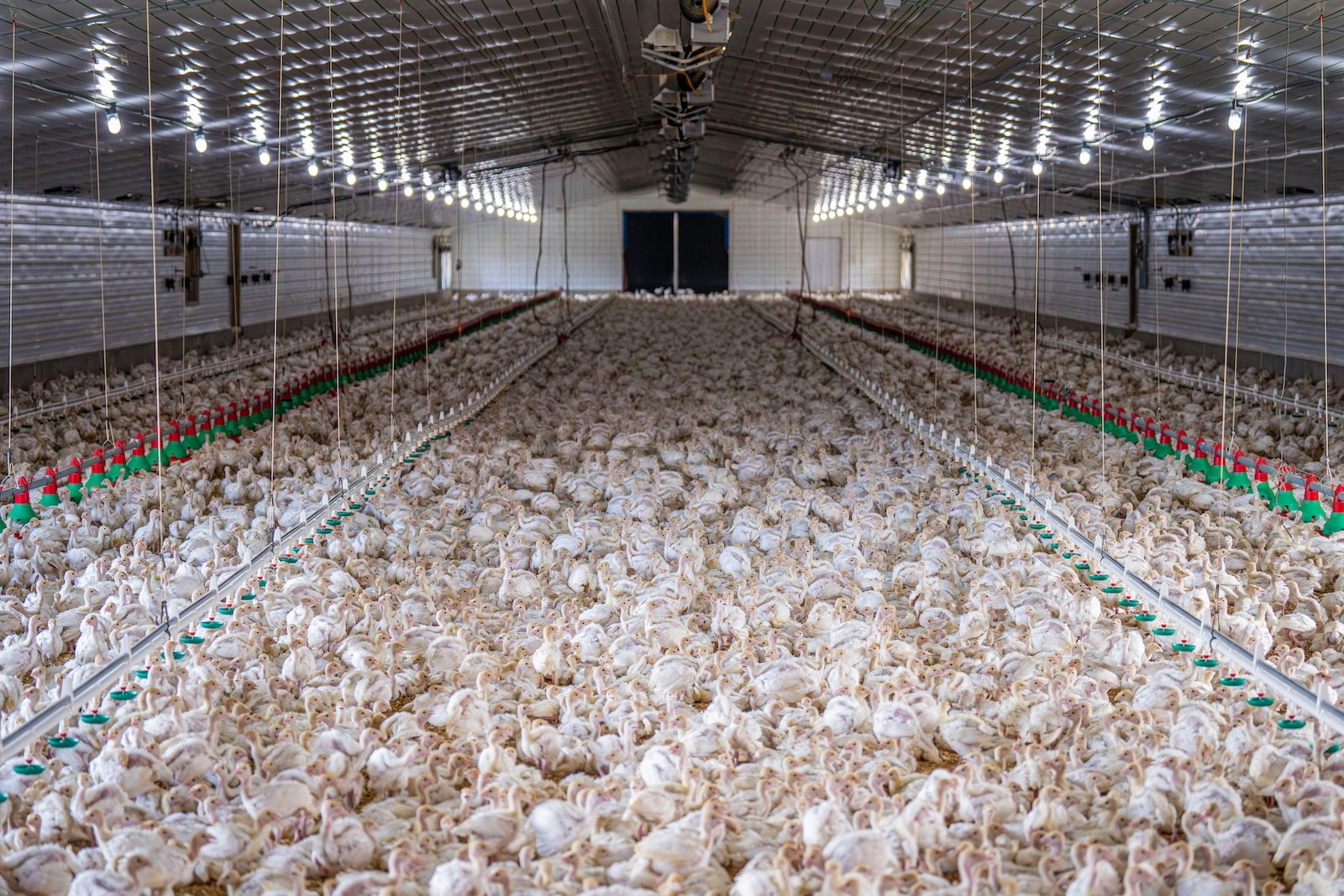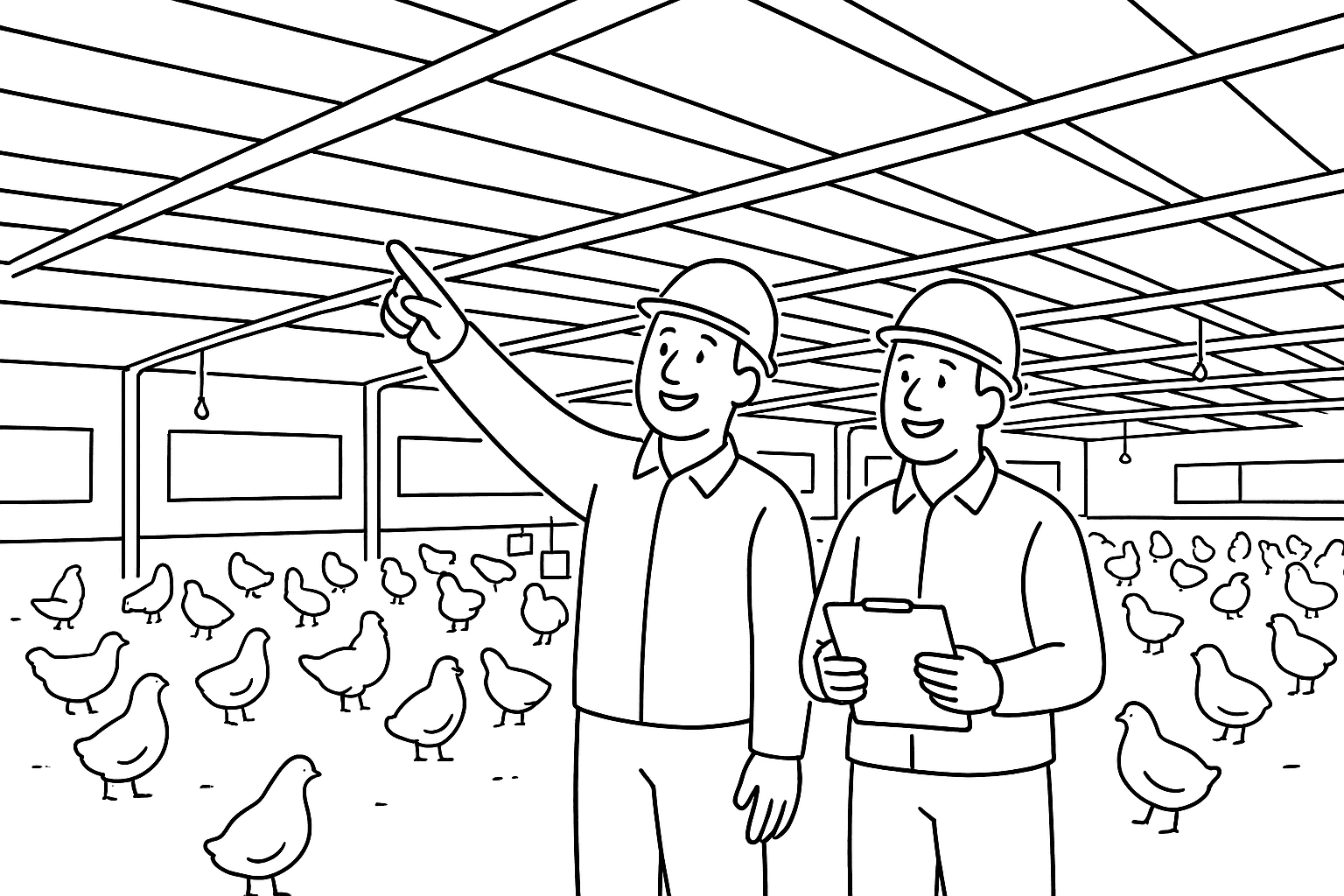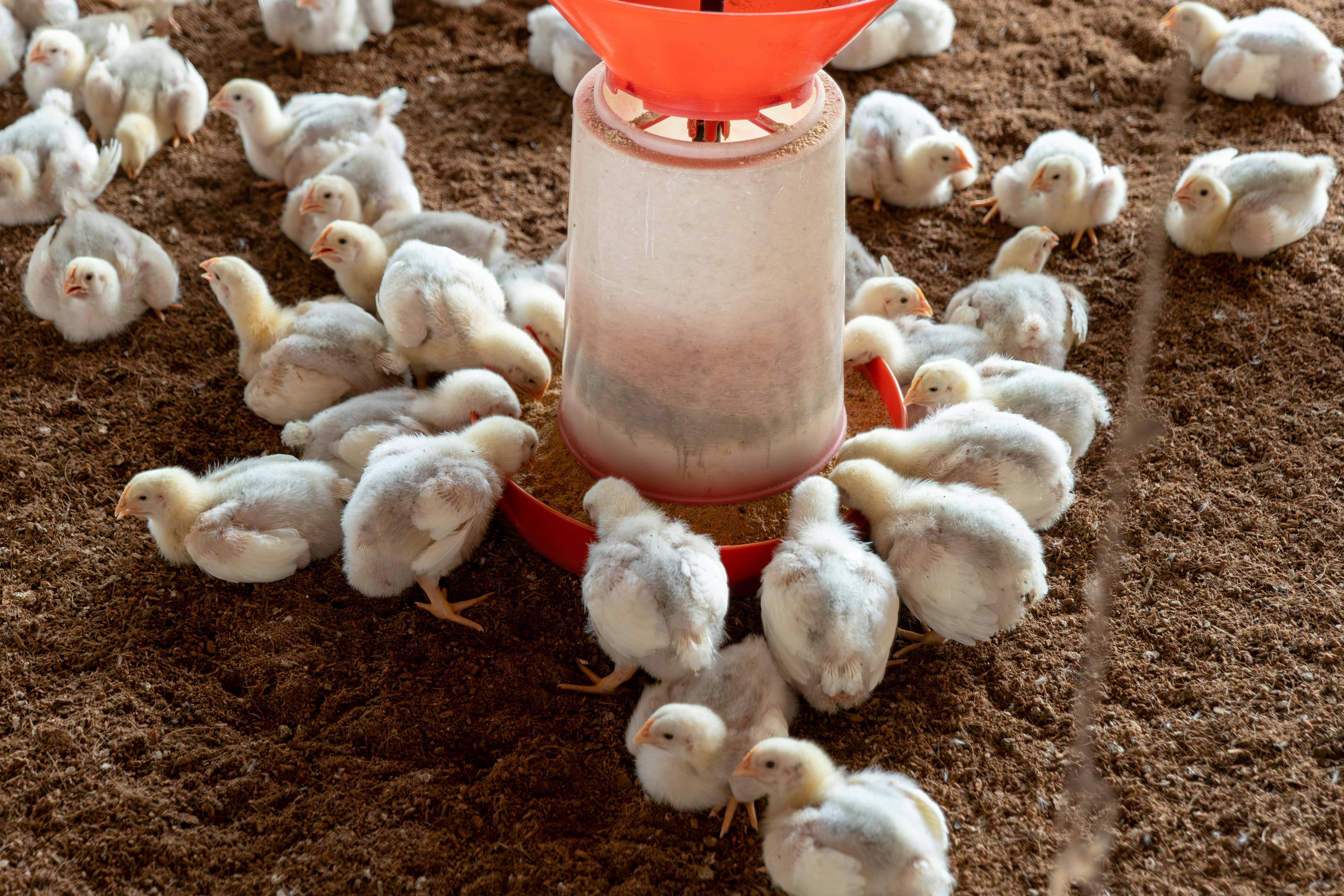Poultry Farming
Improve water quality, animal health, and biosecurity — with fewer chemicals and less waste
Common Water Challenges
Poor Water Quality from the Source
Borehole, local lakes and rivers are full of bacterias and pathogens
Biofilm Buildup In Water Lines
Biofilm clogs the lines, potentially leading to catastrophic outcomes
Pathogen Load (e.g., E. coli, Salmonella)
Induces stress on animals and requires farm operators to use unnecessary antibiotics
Low Dissolved Oxygen
Reduces Feed Conversion Ratio. Oxygen is required to break down the food
High Energy & Water Waste With Flushing
Expensive communal water is often discarded when could be treated
Regulatory Concerns
High chemical usage often turn out problematic for government guidelines
Why Nanobubbles Work Where Traditional Methods Fails
Staying in the water for weeks
Normal sized bubbles produced by traditional methods quickly rise to the surface and release the oxygen in the atmosphere
Up to 90% of oxygen transfer efficiency
Enhanced dissolution and slow release of oxygen and ozone in water because of their high surface area
Oxidizing effect
When nanobubbles collapse they create high pressure and temperatures around them, releasing reactive oxygen species which kill pathogens
Why Waboost?
Efficient, reliable, and transparent platform for large-scale water treatment programs
Integrated Oxygen + Ozone, One Platform
Gea systems hyper-oxygenate water and optionally disinfect with ozone—no gas cylinders needed. Systems are modular and easy to retrofit.
Remote Operations at Scale
Waboost Cloud provides real-time sensor data, alarms, and automatic set-point control (e.g., DO/ORP targets) across multiple sites, making it ideal for modern farms.
Low Energy, Low Maintenance
Efficient pumps and very high gas-transfer efficiency reduce OPEX compared with legacy aeration and chemical programmes. This results in lower lifecycle costs.
Validated Sustainability
Third-party impact validation confirms significant, positive impact, including reductions in water, fertilizer, and chemical use. Corporations can use these metrics in their ESG reporting.
Broad Application Track Record
Same core technology has delivered pathogen reduction, DO increases, and performance gains in irrigation and aquaculture—evidence of robustness and safety.
Implementation Blueprint for a Poultry Farms
1. Site Assessment
Our partnership with Aqualabo gives us an access to full suite of sensors that we use to monitor the baseline of key parameters:.
- Dissolved Oxygen Profiles
- Oxidation Reduction Potential
- Nutrients
- Chlorophyll-a, E. coli/Enterococcus
We also assess biofilm presence in water lines, disinfectant use, water temperature and flow rates.
2. Installation Design
3. Gas strategy & Controls
O₂ nanobubbles for continuous oxygenation, periodic O₃ nanobubble pulses for hotspot disinfection and biofilm/algae reset, governed by ORP set-points.
Waboost Cloud with DO/ORP sensors and automation for safe, steady operations and data transparency to stakeholders.
Ramp-up with conservative set-points.
Weekly to monthly KPI reviews.
Seasonal set-point adjustments via the Cloud platform.
5. Monitoring & Verification
KPIs typically include:
Hypolimnetic DO restoration,
HAB days/year,
Secchi depth,
Pathogen counts,
Odor complaints,
Reductions in operation/chemical costs
Public dashboard options
Typical Outcomes & Timelines
0–4 Weeks
✓ Improvement in water clarity / odor
✓ Reduced biofilm visible in drinker lines
✓ Lower pathogen load in water tests
1–3 Months
✓ Improved bird health metrics (mortality, morbidity)
✓ Lower usage of chemical disinfectants / treatments
✓ Better growth / feed conversion rates
Seasonal Cycle
✓ Sustained water system hygiene
✓ Less chemical and energy costs
✓ Improved profitability and compliance




